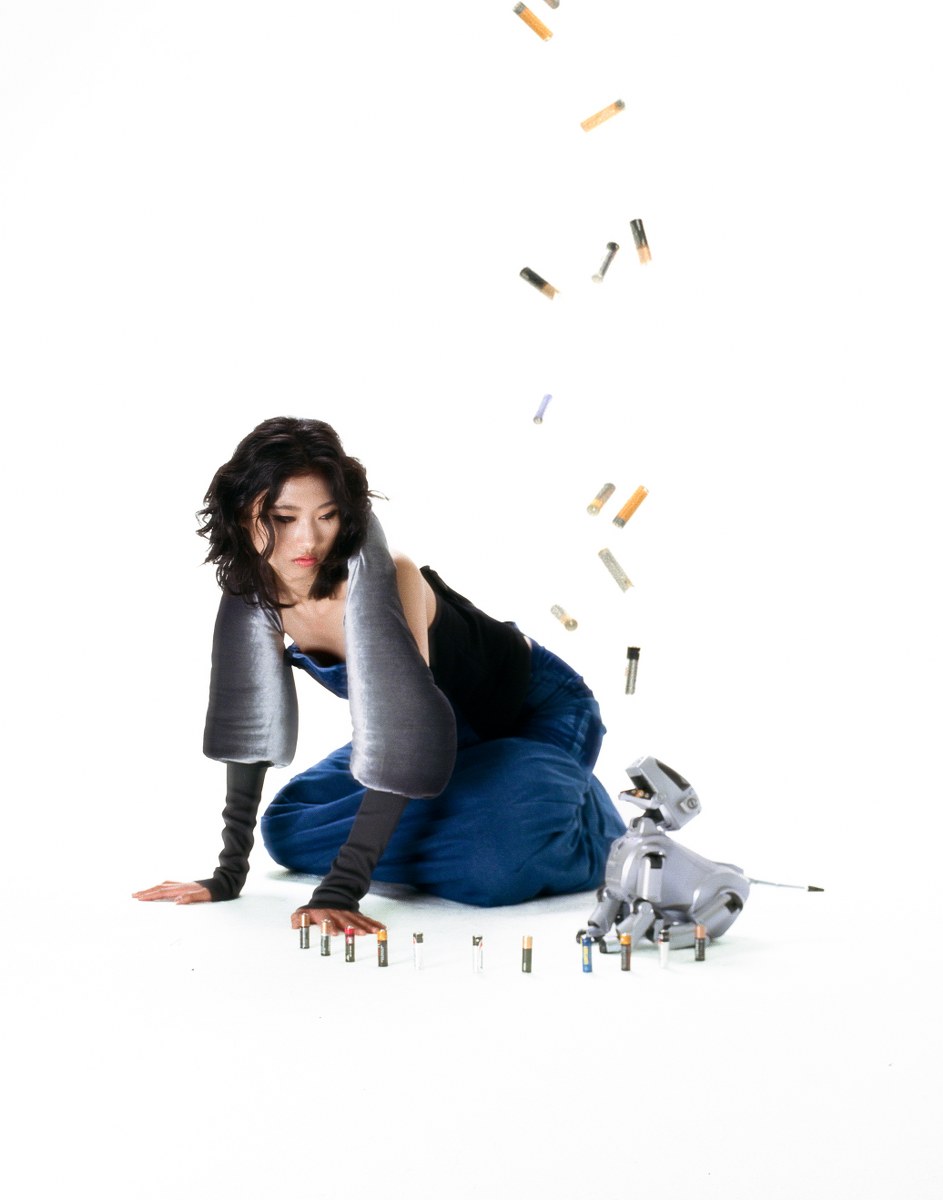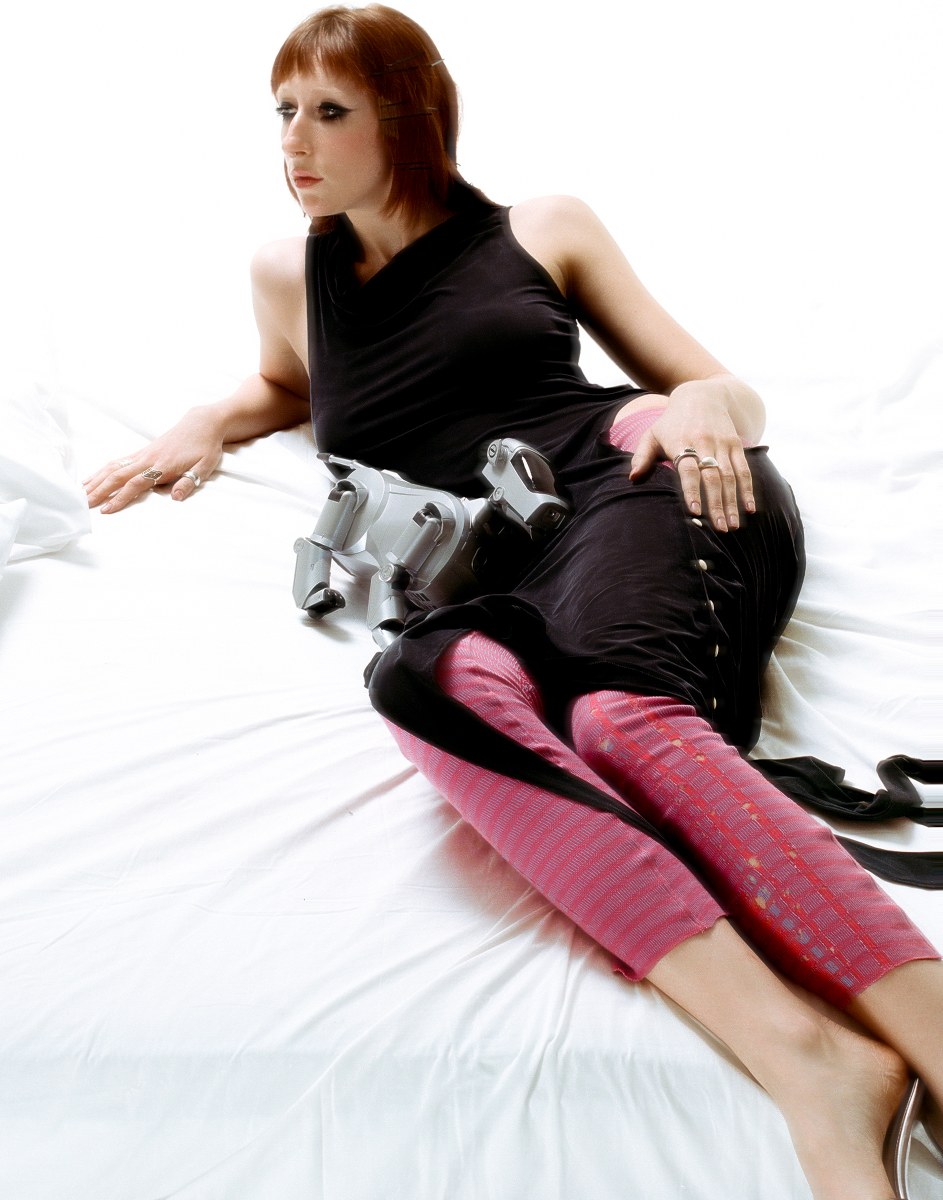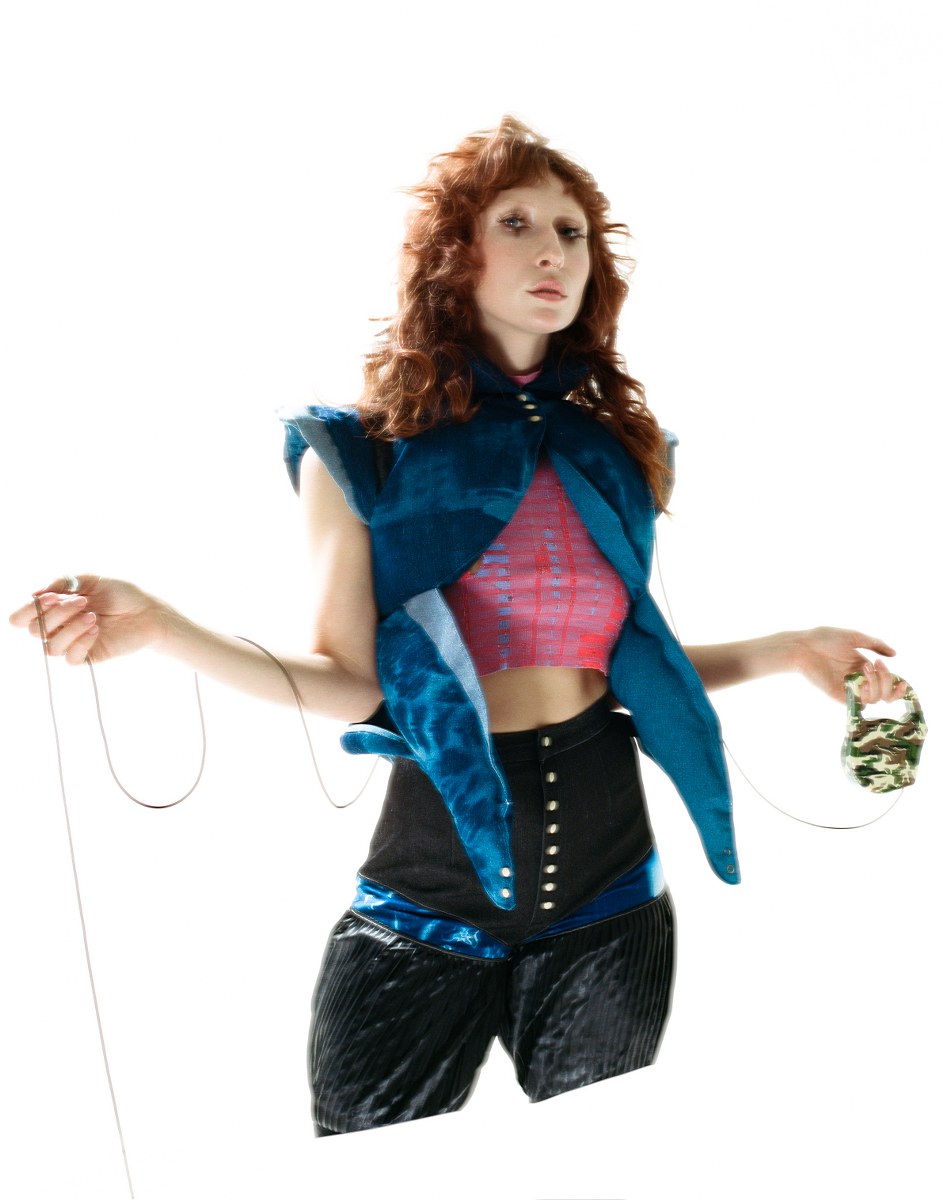Deep Emotions and Virtual Realities: Exclusive Interview with Designer Yuxuan Gong
When you come across a piece that carries an undeniable emotional weight, it often has a story and a visionary behind it. Yuxuan Gong is one such visionary. A proud alumnus of the Parsons School of Design, Yuxuan has been turning her personal emotions and musings into tangible works of art. From sketching her emotions to weaving them into abstract designs, these illustrations become the heart of her fashion collections and art installations.
Central to Yuxuan’s work is the interplay of conflicting emotions and their triggers. Her artistry bridges the realms of reality and virtuality, creating a tantalizing blend that challenges perceptions. As she embarks on her next projects, she hopes to showcase them to a broader audience, amplifying her voice and connecting with fellow enthusiasts of fashion and art.
As a fresh face in the design world, Yuxuan’s work is already turning heads. Our conversation delved into her journey, inspirations, and the raw emotions she weaves into her designs. As we chatted, one thing became clear: Yuxuan isn’t just crafting clothes and installations; she’s telling stories. Come with us as we step into the world of an emerging designer with a bright future ahead.
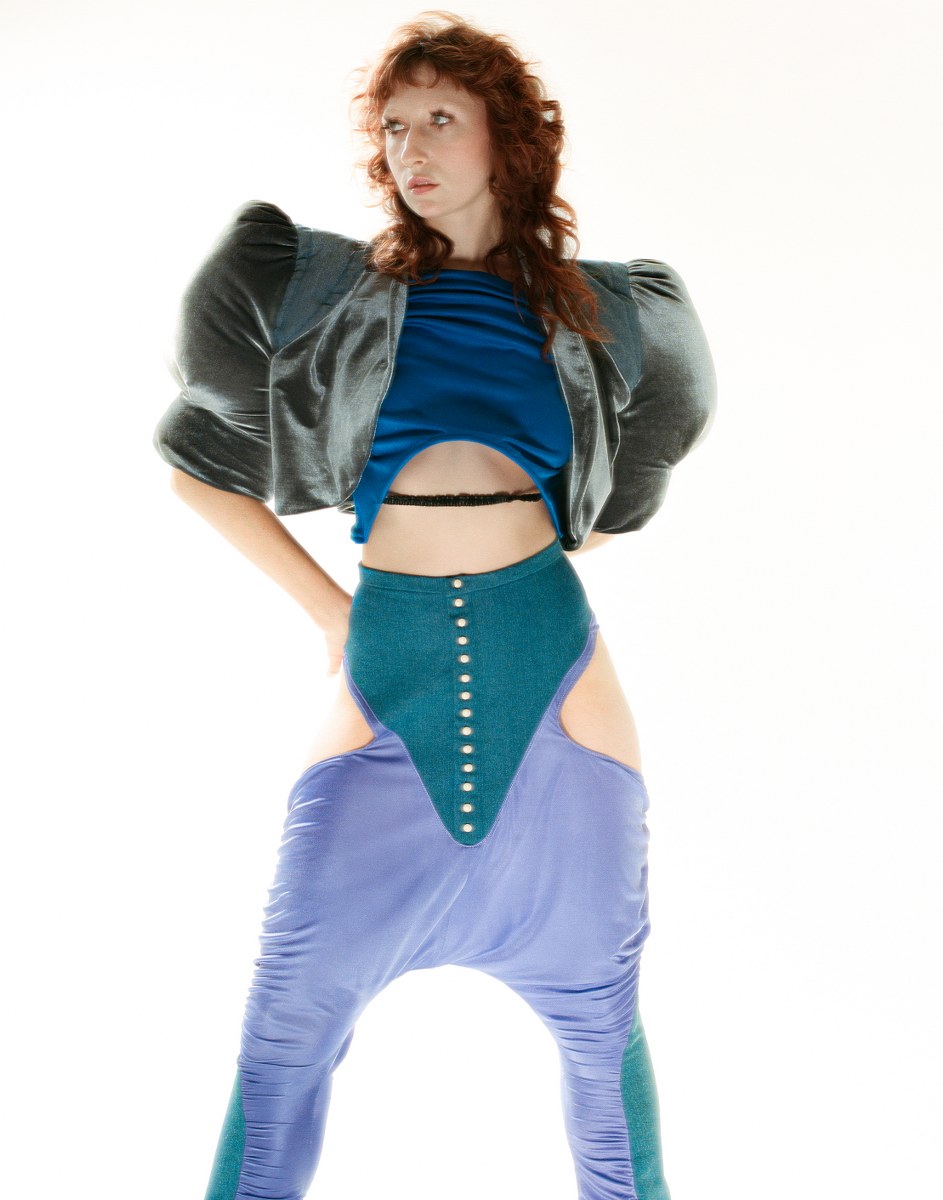
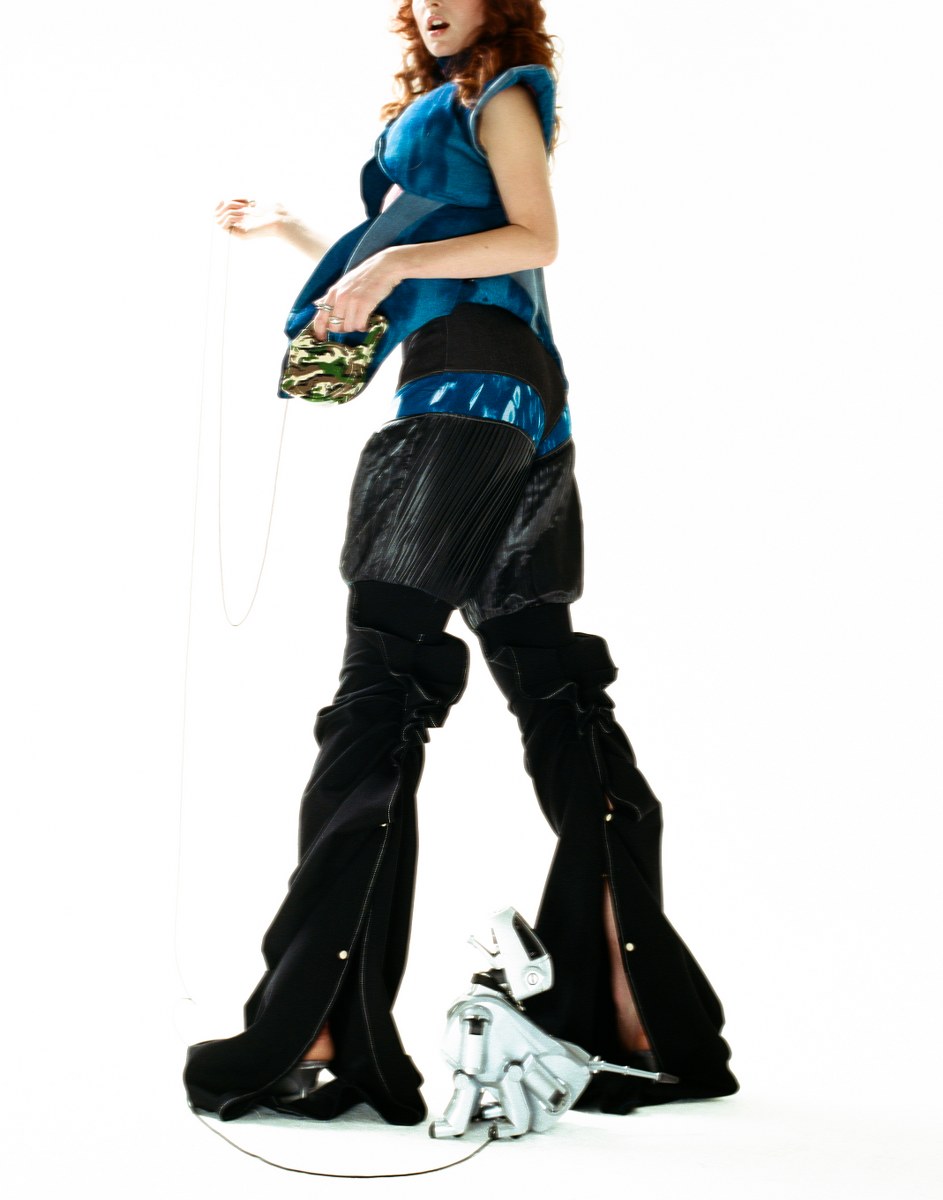
Yuxuan, you mention that your work is deeply influenced by personal emotions and feelings. Could you elaborate on how you translate these abstract emotions into tangible fashion pieces and installation art?
Absolutely, my personal sentiments and feelings profoundly influence my work. I believe that fashion and art are effective means of conveying feelings that are difficult to articulate. To translate these abstract emotions into tangible fashion pieces and installation art, I first examine the nuances of the emotion I wish to communicate. Next, I will attempt to draw parallels between these emotional landscapes and our physical environment. I frequently immerse myself in artistic expressions, such as painting, music, and sculpture, that evoke a particular emotion. Then, I would meticulously select materials, textures, and hues that corresponded. Throughout this creative journey, I am guided by intuition. It frequently results in innovative and unanticipated design decisions that add layers of depth and authenticity to the final pieces.
The intersection of emotion and design is fascinating. Are there any particular emotions that you find more challenging or rewarding to portray in your work?
I am very intrigued by human vulnerability. In two of my projects, I focused on the use of artificial intelligence to provide emotional support and develop relationships with humans, which causes human vulnerability. Nevertheless, depicting vulnerability can be a more complex and nuanced task. To elicit a sense of openness and raw emotion, a delicate balance of elements, such as soft textures and subtle detailing, is required. Finding this equilibrium and ensuring that the design conveys vulnerability without straying into fragility can be difficult. However, when successfully executed, it establishes a profound and personal connection with the viewer, evoking empathy and comprehension.


You talk about blurring the boundaries between reality and virtuality. How do you achieve this in your designs, and what message or feeling do you hope to convey to the viewer?
In my design philosophy, the concept of blurring the line between reality and virtuality is of tremendous importance. I believe that in postmodern society, the manner in which individuals communicate, form relationships, and consume objects has changed; objects are transient and relationships are ephemeral. One way I convey this concept to the viewer is through exploring innovative materials and pattern-making that have the ability to transform and adapt, providing a dynamic quality to my designs. This enables the wearer or observer to become an active participant in the piece’s narrative, blurring the distinction between inert fashion and interactive art.
How has your education at Parsons School of Design influenced your approach to fashion and art? Are there any pivotal experiences or mentors who have shaped your career?
My education at Parsons School of Design has had a significant impact on how I approach fashion and art. The curriculum at Parsons places a heavy emphasis on fostering creativity, challenging boundaries, and developing technical expertise. This foundation has helped me develop a unique and distinct design aesthetic. The significance of interdisciplinary is one of the most important lessons that Parsons taught me. The school encourages students to draw inspiration from a variety of artistic disciplines, including fine arts, architecture, and more. This method has enabled me to approach design holistically, frequently integrating elements from a variety of disciplines. This multidimensional approach has enabled me to create designs with deeper resonance, blurring the boundaries between fashion, art, and other forms of creative expression. As for formative experiences, I had the privilege of being mentored by so many renowned Parsons faculty members, but my college peers have inspired me the most. Before every exam, I stayed up all night with them in the studio’s freezing temperatures. Even those I didn’t get to know very well, I was deeply moved by their efforts. These moments always encourage and support me during my lowest moments, so I want to give them my highest regard.
Your work often touches on conflicting emotions and preceding triggers. What kind of research or self-exploration do you undertake to encapsulate these complexities?
My creative process depends on the exploration of contradictory emotions and their underlying motivations. I use a combination of research and self-exploration to encapsulate these complexities. Research is an essential first step. I delve into diverse sources, such as psychology articles, to obtain a deeper comprehension of the complex interplay of emotions. In addition, I utilize my personal experiences, memories, and encounters with conflicting emotions. These introspective journeys serve as a source of inspiration, allowing me to imbue my work with genuineness and relatability. My ultimate goal is to produce artwork that resonates with the depth and complexity of human emotions, allowing viewers to reflect and connect.



Can you walk us through your creative process? How do you go from abstract drawings to a fully realized fashion collection or art installation?
As a fashion designer and installation artist, I believe that emotions and the ability to tell a story are the most essential elements of a successful design. So, when I begin a new endeavor, I first consider the emotions I wish to convey and construct a narrative. I frequently begin by immersing myself in a variety of artistic mediums, such as painting, coloring, and sculpture, that correspond to the emotion I wish to convey. This aids in the development of a visual and sensory vocabulary that will serve as the basis for my design. I then explore the world of textiles, materials, and shapes. Each element is meticulously chosen to capture the essence of the emotion and story I intend to convey. Take my digital nomadism project as an example: I could relate to the feelings of isolation and vulnerability that postmodern society citizens experience, so I drew my emotions in blue and silver and used contrasting materials such as metal and silicone.
You mentioned wanting to connect with like-minded individuals who appreciate art and fashion. How has social media, particularly your Instagram @vivmoonl, helped you in achieving this objective?
My Instagram account @vivmoonl has been an invaluable resource for communicating with people who share an interest in art and fashion. It has been instrumental in expanding my creative community and nurturing meaningful relationships. Instagram affords me the opportunity to exhibit my work to art and fashion enthusiasts worldwide. The platform’s visual nature enables me to express my artistic vision directly, providing a glimpse into the emotions, inspirations, and stories behind each creation. This openness fosters a closer relationship with my audience. In addition, Instagram’s algorithmic features, such as hashtags and explore pages, have allowed my work to reach a larger audience than just my immediate network. This increased visibility has resulted in organic connections with individuals whose artistic approach resonates with mine.
Finally, what can we expect from Yuxuan Gong in the coming months or years? Do you have any upcoming projects that you are particularly excited about?
In the upcoming months and years, I am thrilled about the development of my brand. I will concentrate on broadening my creative horizons by publishing and exhibiting a number of captivating collections and immersive installations. Additionally, I will collaborate with other talented artists. Together, we will curate art exhibitions and fashion pop-ups that promise to be vibrant and unique occasions. These partnerships are a testament to the power of collective imagination, and I can’t wait to see how our combined perspectives shape these events into something genuinely extraordinary.
To dive deeper into Yuxuan’s world, her website, yuxuangong.me, offers an intimate glimpse. For a more candid view of her inspirations and daily musings, you can follow her on Instagram @vivmoonl.
Photo Credits: Fashion Designer: Yuxuan Gong
Photographer: Honglin Cai
Models: Yiyuan Zhang & Elin Radziminsky
